Embarking on a culinary adventure requires bravery, especially when it comes to foods that challenge our palates with their unique flavors, textures, or aromas. Some foods demand we step outside our comfort zones, daring us to embrace the extraordinary.
Are you bold enough to test your taste buds with these 25 acquired tastes? In this exploration, we’ll delve into the world of distinctive dishes that may initially surprise but could ultimately win your heart. Open your mind and palate as we journey through these intriguing gastronomic delights.
1. Durian
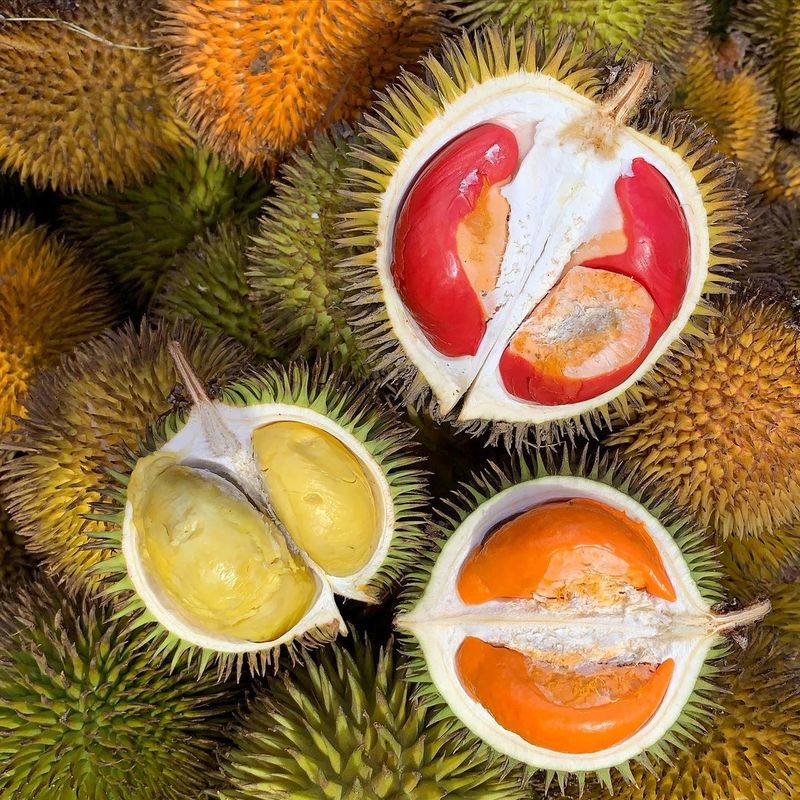
How would you react to a fruit that’s notorious for its potent smell yet adored for its creamy sweetness? Durian, often called the “king of fruits,” presents this paradox. Its aroma, likened to rotten onions, might deter the fainthearted.
However, those brave enough to taste it often describe its custard-like texture and rich, almond-flavored flesh as unparalleled. In Southeast Asia, it’s a delicacy, celebrated during its harvest season. Yet, its powerful scent means it’s banned in many hotels and public transport.
Curious to try? It’s an adventure unto itself.
2. Natto
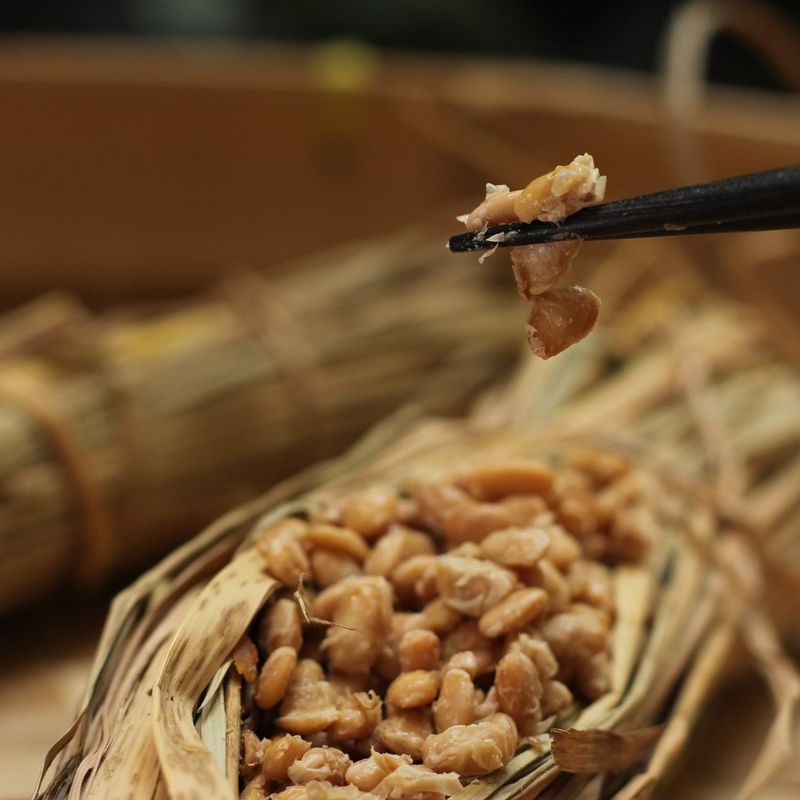
If sticky and gooey textures fascinate you, natto might just be your new favorite. This traditional Japanese food, made from fermented soybeans, boasts a strong odor and a flavor that’s often compared to aged cheese.
Many Japanese enjoy it with rice, incorporating it into their breakfast routine. Its health benefits, thanks to abundant probiotics and nutrients, are widely acknowledged. However, its stringy texture may take some getting used to.
Ready to challenge your palate? Natto offers a unique tasting experience that combines history, culture, and health benefits.
3. Hákarl
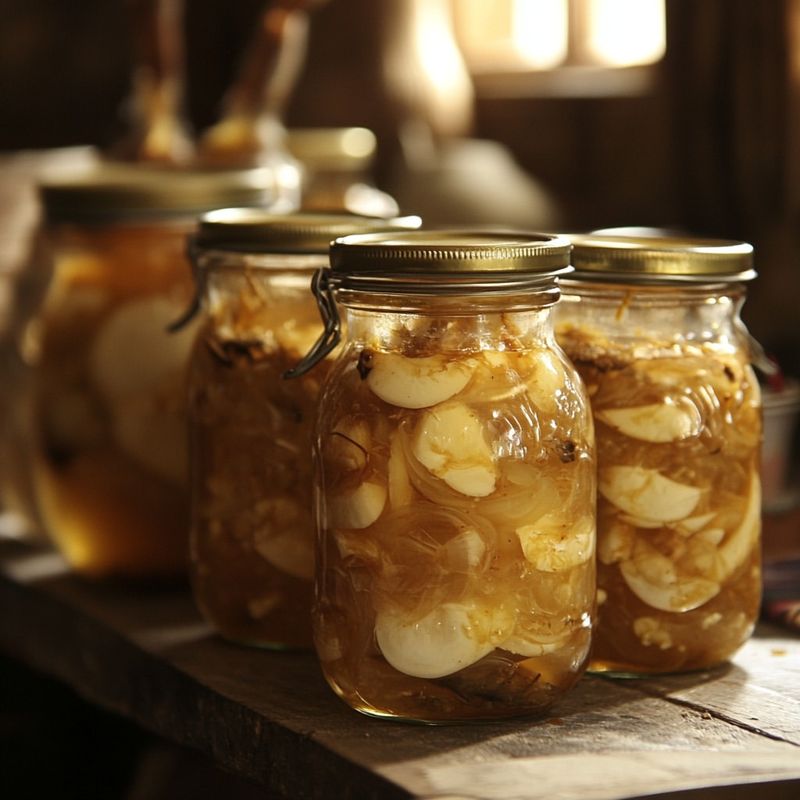
Where does one find fermented shark on a menu? In Iceland, of course. Hákarl is not for the faint-hearted, with its ammonia-rich aroma and distinctive taste. This traditional Icelandic dish involves curing Greenland shark, a process that neutralizes its natural toxins.
For locals, it’s a part of cultural heritage, typically consumed during the midwinter festival, Þorrablót. First-timers might find the taste challenging, described as fishy and gamey with a pungent aftertaste.
Visiting Iceland? Trying hákarl is a rite of passage that connects you to the land’s Viking roots.
4. Stinky Tofu
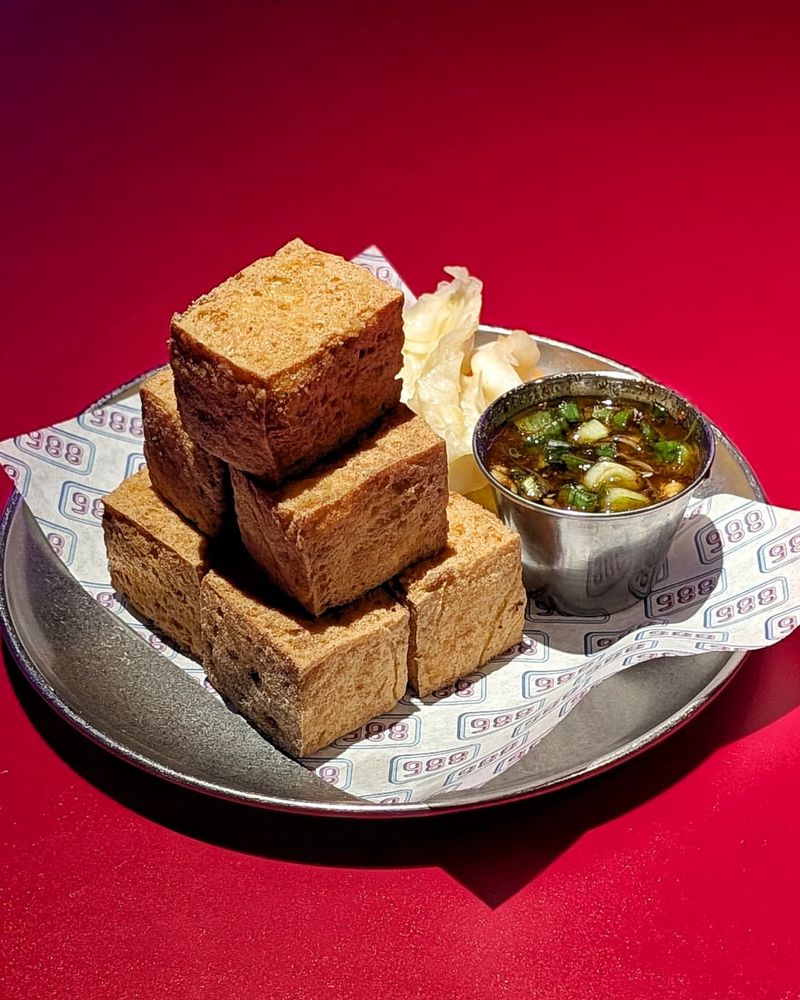
In bustling night markets across Taiwan, stinky tofu stands draw adventurous foodies with its pungent aroma. This fermented tofu variety is deep-fried to perfection, resulting in a crispy exterior and soft center.
While the smell might remind some of strong cheese, its flavor is surprisingly mild and slightly tangy. It’s often served with a pickled cabbage salad that balances the richness of the tofu.
If you appreciate bold street food experiences, stinky tofu is a must-try, showcasing the vibrant culinary culture of Taiwan.
5. Surströmming

If you’re in Sweden during summer, you might encounter surströmming, a fermented Baltic herring with a legendary smell. Its aroma is so intense that opening a can indoors is discouraged.
Despite its reputation, Swedes enjoy it with flatbread, potatoes, and onions, savoring the complex flavors. The fermentation process lends it a tangy, savory taste that pairs well with traditional accompaniments.
Are you up for a culinary challenge? Deciding to eat surströmming is a true test of daring, rewarding those who embrace its strong personality.
6. Casu Marzu
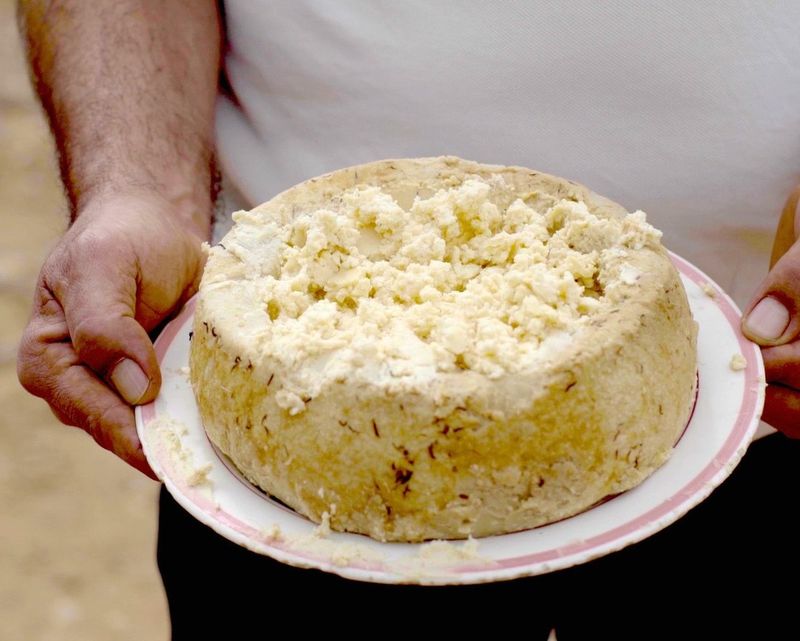
Imagine cheese that’s alive with maggots. Casu marzu, originating from Sardinia, is exactly that. This sheep milk cheese undergoes fermentation with the help of cheese fly larvae, resulting in a soft, almost spreadable texture.
The flavor profile is intense, with a robust, tangy kick that cheese lovers find intriguing. It’s traditionally consumed during special occasions, celebrated for its unique production method.
If you’re a cheese aficionado seeking a truly singular experience, casu marzu offers a taste adventure like no other.
7. Kiviak
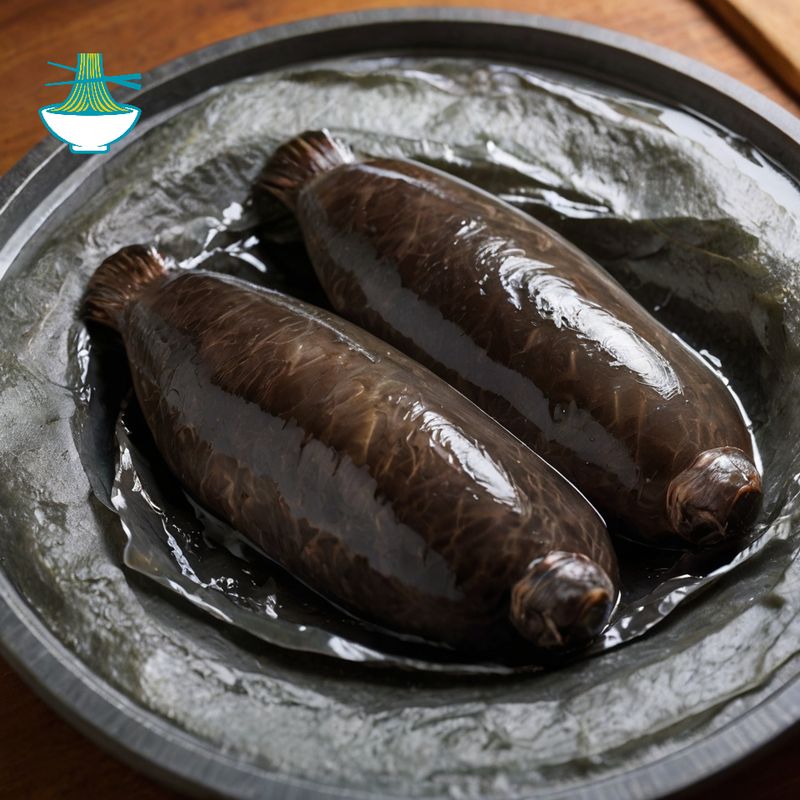
In Greenland, kiviak is a culinary tradition that speaks to survival and ingenuity. This unusual dish involves fermenting small seabirds called auks within a hollowed seal carcass, left to mature under a pile of rocks for several months.
The resulting delicacy boasts an intense, gamy flavor, with tenderized bird meat appreciated during celebrations. Kiviak is a testament to ancient preservation techniques, serving as a cultural touchstone for Inuit communities.
Brave enough to try this Arctic treat? Kiviak offers a taste of Greenland’s rugged, resourceful heritage.
8. Century Egg
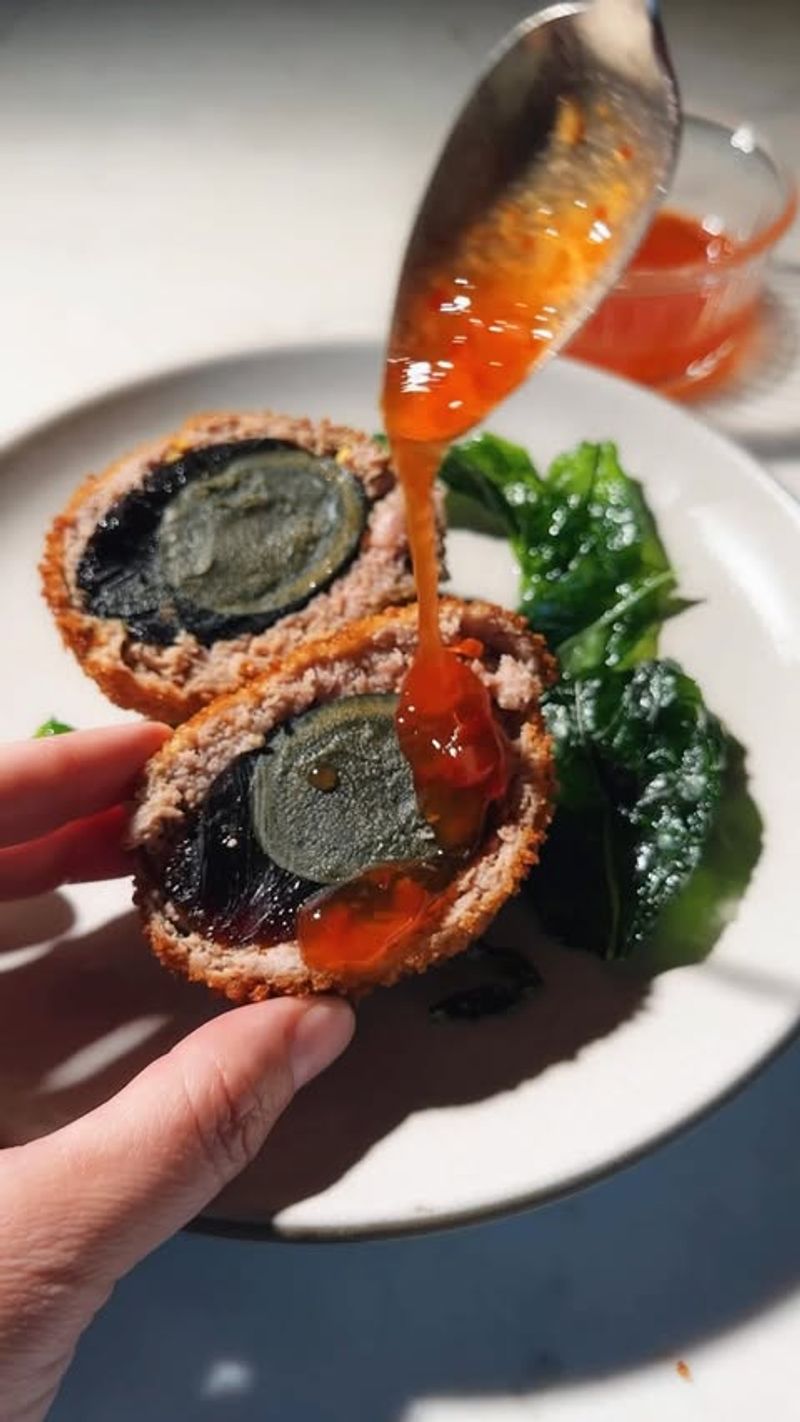
Century eggs, or pidan, challenge perceptions with their unique appearance and flavor. These preserved duck or chicken eggs transform over time, resulting in a translucent black jelly-like albumen and a creamy, flavorful yolk.
The taste is savory, with hints of ammonia and sulfur, often enjoyed as a side dish or in congee. In Chinese cuisine, century eggs symbolize a culinary art form, celebrated for their distinctiveness.
Looking to expand your palate with something unconventional? Century eggs offer a taste journey that defies expectations.
9. Escamoles
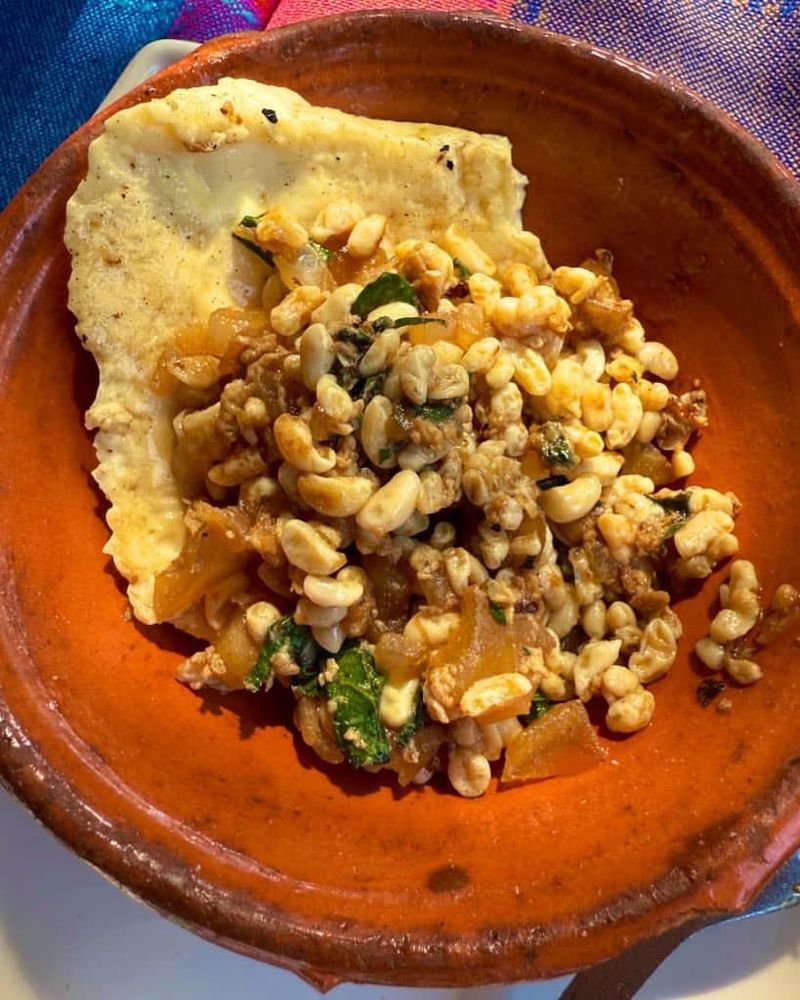
Hailed as “insect caviar,” escamoles are ant larvae harvested from agave plant roots in Mexico. This unusual ingredient features in Mexican cuisine for centuries, offering a buttery, nutty flavor that enchants those who dare.
Typically prepared with eggs and spices, it’s served with tortillas, making for a unique taco filling. Escamoles represent the rich tradition of entomophagy, contributing to sustainable food practices.
Willing to try something extraordinary? This delicacy invites you to explore a different facet of Mexican gastronomy.
10. Balut
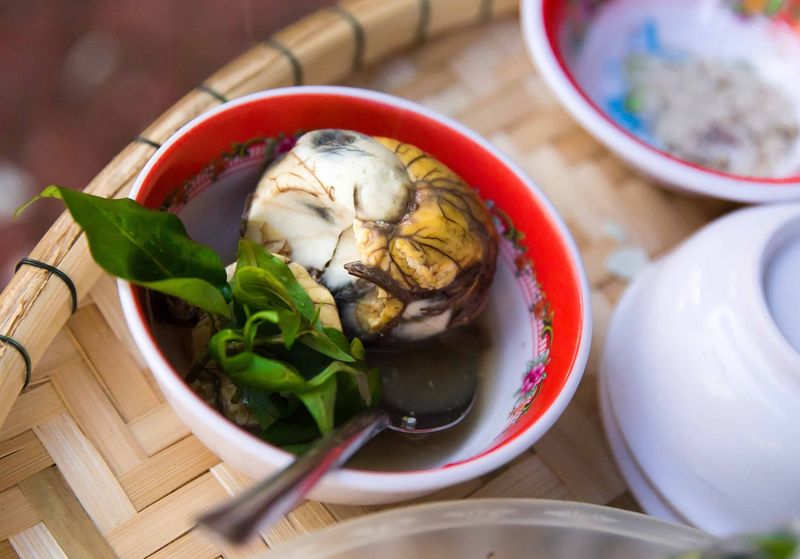
In the Philippines, balut is a beloved street food that might seem daunting to outsiders. It consists of a fertilized duck egg, boiled and eaten directly from the shell, complete with its developing embryo.
Devotees savor its rich, savory broth and tender contents, often adding salt and vinegar for extra zing. Balut is a cultural staple, often enjoyed with beer in social gatherings.
Curious to engage with this Filipino tradition? Balut offers a bold culinary adventure that bridges taste and cultural heritage.
11. Vegemite

Vegemite, a quintessential Australian spread, divides opinions with its salty, umami-packed punch. Made from brewer’s yeast extract, it’s akin to Marmite but with its own distinctive charm.
Australians often slather it on toast with butter, enjoying the savory depth it brings to breakfast. Its potent flavor might surprise newcomers, who must navigate its intensity to uncover its appeal.
Eager to try a taste that’s truly down under? Vegemite challenges your palate, offering a slice of iconic Australian culture.
12. Sea Cucumber

Sea cucumber, a marine delicacy in Chinese cuisine, intrigues with its gelatinous texture and subtle taste. Often braised or stewed, it absorbs surrounding flavors, enhancing dishes with a unique mouthfeel.
Celebrated for its health benefits, including collagen and protein, it’s a sought-after ingredient in Asian delicacies. The preparation requires skill, highlighting its status as a culinary luxury.
Interested in exploring traditional Chinese flavors? Sea cucumber offers a textured experience that complements the art of Asian cooking.
13. Lutefisk
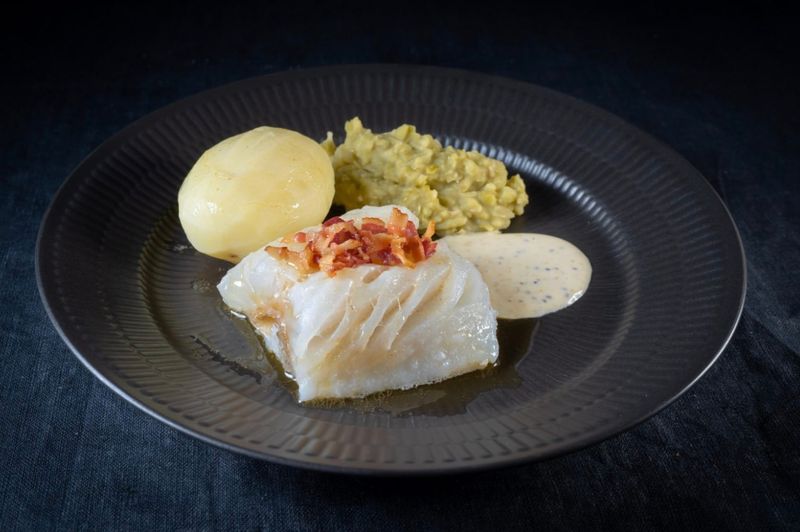
In Nordic cuisine, lutefisk stands out for its peculiar preparation and flavor. Dried whitefish, typically cod, is soaked in a lye solution, then rehydrated, creating a gelatinous consistency.
Served with potatoes and peas, it offers a mild taste that contrasts its potent preparation method. Lutefisk is a holiday staple in Norway and Sweden, celebrated for its historical significance.
Intrigued by traditional Nordic dishes? Lutefisk provides a taste of cultural heritage, inviting you to embrace its storied past.
14. Huitlacoche
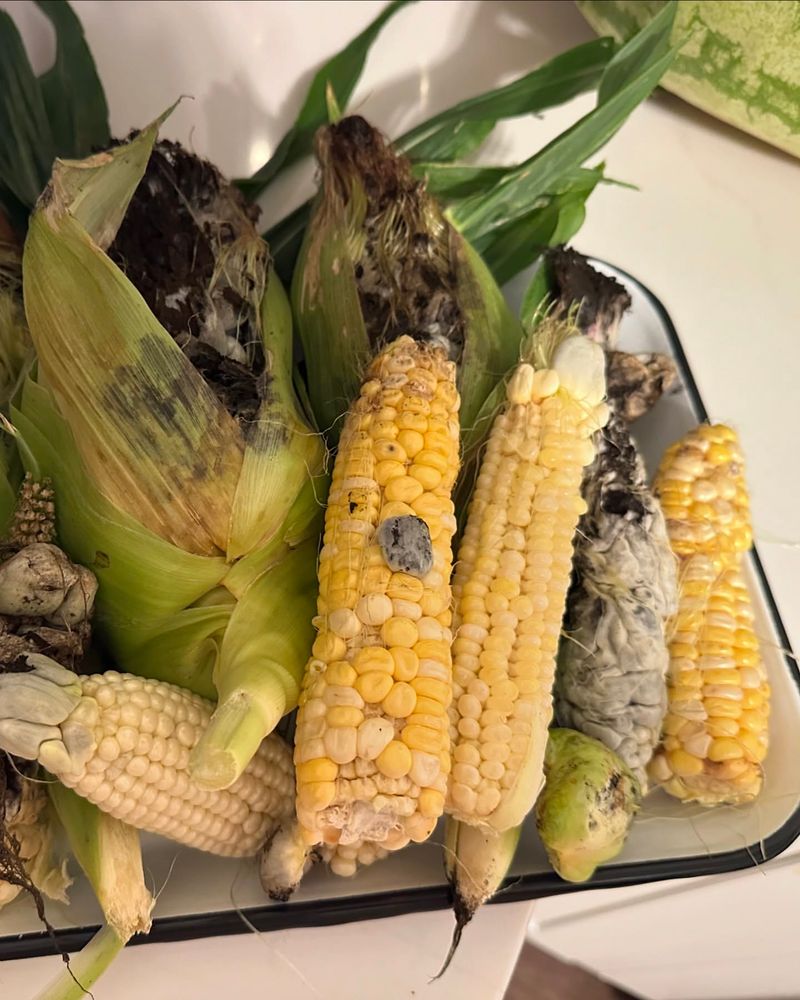
Known as “corn smut,” huitlacoche transforms ordinary maize into an extraordinary ingredient. This fungus grows on corn, creating kernels with a smoky, earthy flavor prized in Mexican cuisine.
Often used in quesadillas and tacos, it imparts a unique twist to traditional recipes. Huitlacoche symbolizes Mexico’s culinary innovation, turning an agricultural anomaly into a gourmet delight.
Keen to taste this Mexican marvel? Huitlacoche invites you to discover an unexpected harmony of flavors from the land.
15. Sannakji
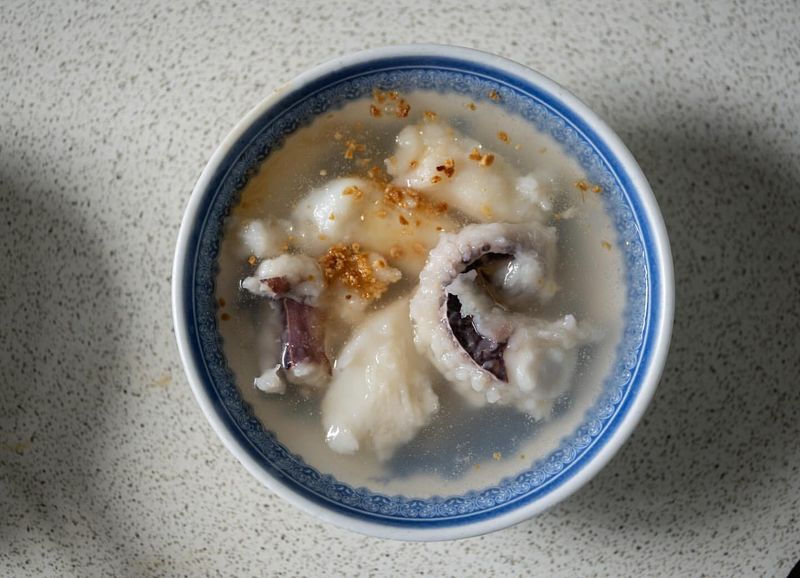
How brave are you when it comes to live seafood? Sannakji, a Korean delicacy, tests your daring with its writhing octopus tentacles. These are typically served fresh, drizzled with sesame oil and seeds.
The experience is both tactile and flavorful, as the tentacles continue to move while being eaten. Sannakji is celebrated for its freshness and the thrill of its consumption method.
Ready to embrace a living culinary challenge? Sannakji offers an adventure that tantalizes both taste buds and senses alike.
16. Kimchi
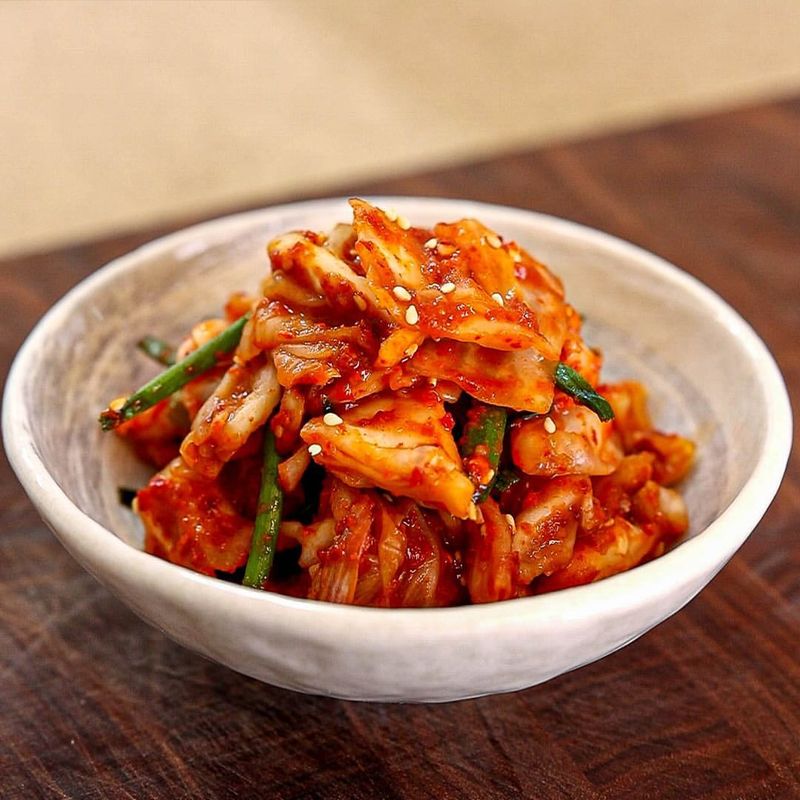
Kimchi, a cornerstone of Korean cuisine, captivates with its spicy, tangy profile. This fermented vegetable dish, typically made with napa cabbage and radishes, boasts an array of flavors that evolve over time.
Rich in probiotics and vitamins, kimchi is celebrated for both its taste and health benefits. It accompanies almost every Korean meal, symbolizing a culinary tradition that dates back centuries.
Curious to explore Korean flavors? Kimchi invites you to savor its dynamic taste and cultural significance.
17. Marmite

Marmite, much like its Australian cousin Vegemite, polarizes taste buds with its strong, salty essence. Made from yeast extract, it’s a beloved spread in the UK, often enjoyed on toast or in sandwiches.
Its intense umami flavor is an acquired taste, cherished by those who appreciate bold, savory notes. Marmite enthusiasts proudly declare their allegiance, while detractors remain equally vocal.
Daring enough to try this divisive spread? Marmite offers a quintessentially British taste experience that sparks passionate opinions.
18. Fugu
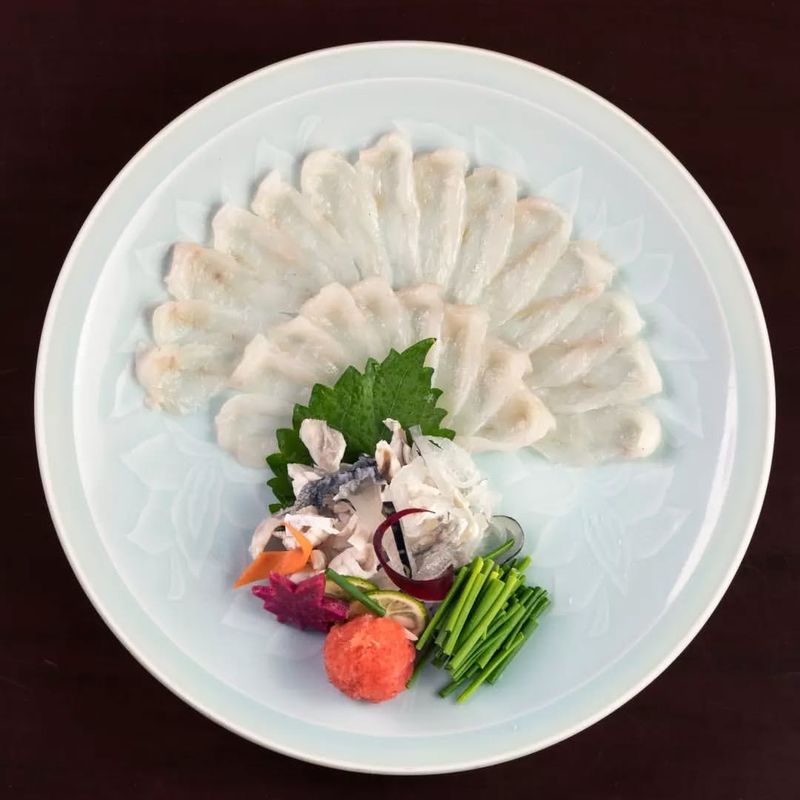
Fugu, the infamous pufferfish, represents both danger and delicacy in Japanese cuisine. Only licensed chefs can prepare this fish, as its organs contain lethal toxins.
The thrill of consuming fugu lies in the skill required to render it safe, resulting in a subtle, refined flavor. Served as sashimi or hot pot, it’s a culinary adventure that attracts the daring.
Interested in testing your mettle with fugu? This dish promises excitement and an unforgettable taste journey.
19. Blood Sausage
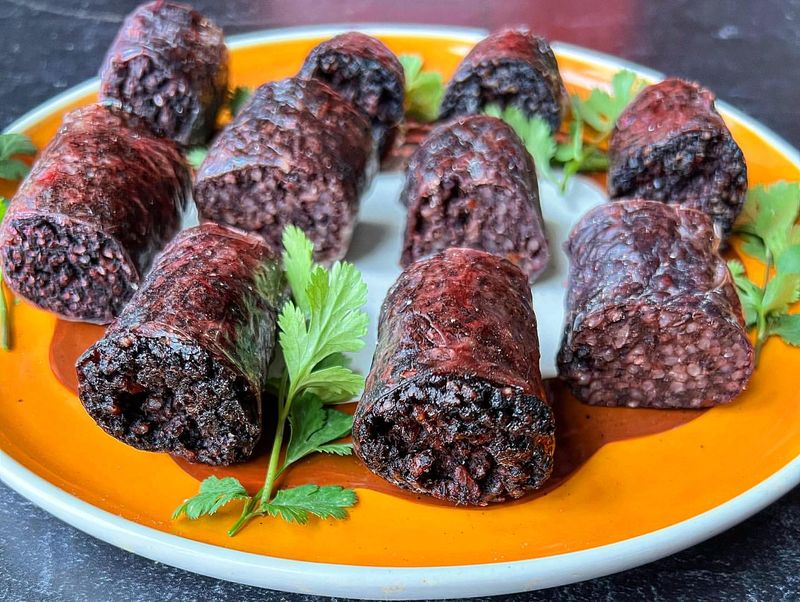
Diverse cultural iterations make blood sausage a global phenomenon, from Europe to Asia and beyond. This sausage uses animal blood as a primary ingredient, seasoned and stuffed into casings.
Rich, flavorful, and often paired with onions or spices, it’s a hearty dish that warms the soul. Each region imparts its own twist, reflecting local tastes and traditions.
Curious to explore this age-old delicacy? Blood sausage invites you to taste a piece of culinary history.
20. Escargot
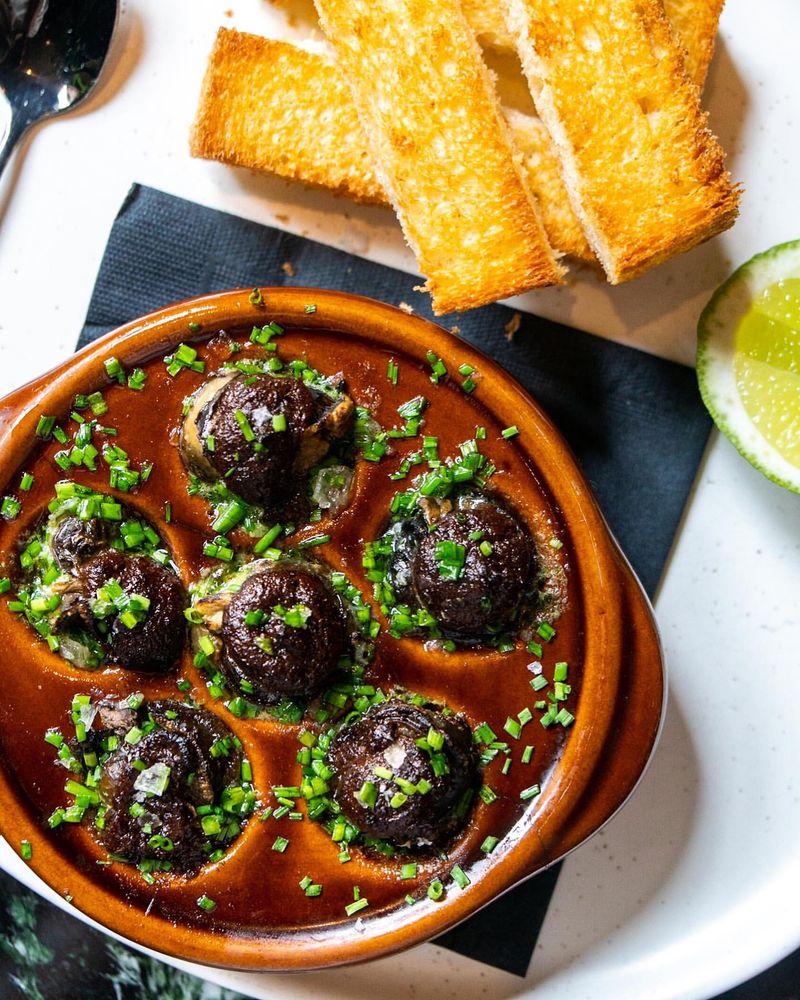
In the world of French gastronomy, escargot stands as a quintessential delicacy. These land snails, cooked with garlic, herbs, and butter, offer a tender, savory experience.
Often served as an appetizer, escargot brings a touch of luxury and tradition to the table. Its preparation highlights the artistry of French cuisine, from the farms to fine dining.
Eager to indulge in a classic French treat? Escargot provides a taste of elegance and culinary refinement.
21. Kefir

Though visually similar to yogurt, kefir offers a distinct tangy flavor and creamy consistency. This fermented milk drink, rich in probiotics, boasts numerous health benefits, enhancing digestion and immunity.
Originating from the Caucasus Mountains, kefir is enjoyed worldwide for its refreshing taste and nutritional value. It’s versatile, sipped alone or blended into smoothies and dressings.
Interested in a healthy beverage with a kick? Kefir offers a unique, fermented flavor that’s both revitalizing and beneficial.
22. Haggis

Scotland’s national dish, haggis, invites culinary exploration with its rich, savory profile. This traditional pudding combines sheep’s offal, oats, and spices, encased in a stomach lining.
Often served with “neeps and tatties” (turnips and potatoes), it’s a staple of Burns Night celebrations. Haggis embodies Scottish heritage, reflecting the resourcefulness of its people.
Curious to taste Scotland’s robust flavors? Haggis offers a hearty, historical dish that celebrates cultural pride and culinary tradition.
23. Spicy Duck Tongue
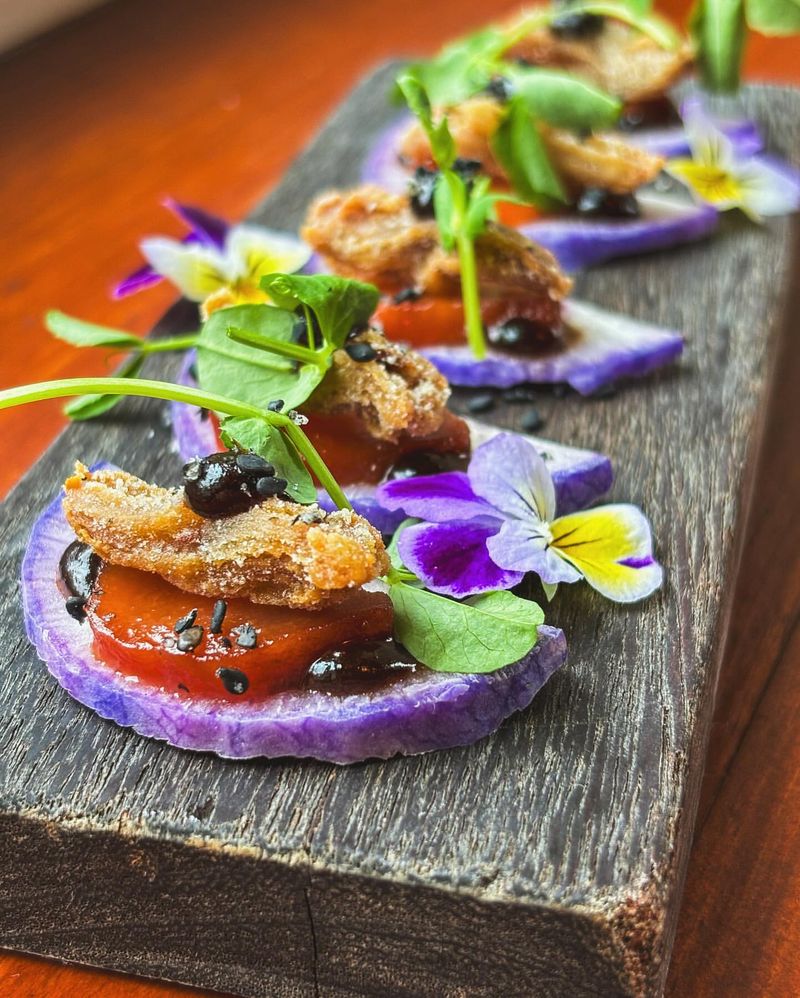
In Chinese cuisine, duck tongues offer a spicy, flavorful treat for adventurous eaters. Cooked with a blend of spices and chili, they present a chewy texture that intrigues the palate.
Often served as a snack or appetizer, these delicacies highlight the culinary creativity prevalent in China. Their preparation requires precision, ensuring every piece is perfectly seasoned.
Ready to try something uniquely Chinese? Spicy duck tongues offer a tantalizing taste experience that excites the senses.
24. Gefilte Fish

Gefilte fish, a staple in Jewish cuisine, particularly during Passover, blends ground fish with onions, carrots, and spices. This poached dish offers a mild, sweet flavor that comforts and satisfies.
Traditionally homemade, gefilte fish is a cherished part of family gatherings, symbolizing cultural connection. Its unique blend of ingredients reflects the resourcefulness of Jewish cooking.
Eager to taste a piece of culinary tradition? Gefilte fish invites you to celebrate heritage and family bonds through its time-honored flavors.
25. Kombucha

Kombucha, a fermented tea drink, captivates with its tangy, effervescent character. Brewed with a symbiotic culture of bacteria and yeast (SCOBY), it’s celebrated for its probiotic benefits.
The drink’s flavor profile varies, influenced by teas and added ingredients like fruits and herbs. It’s a refreshing choice for those seeking a health-boosting beverage.
Curious about trying a trendy, health-focused drink? Kombucha offers a fizzy adventure that delights both taste and wellness enthusiasts.

